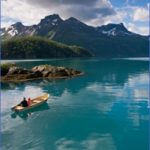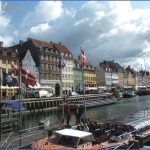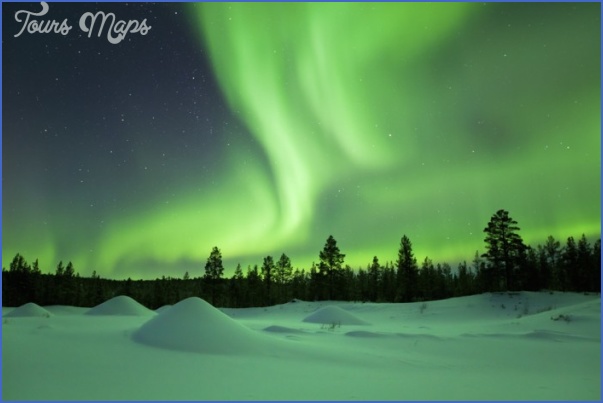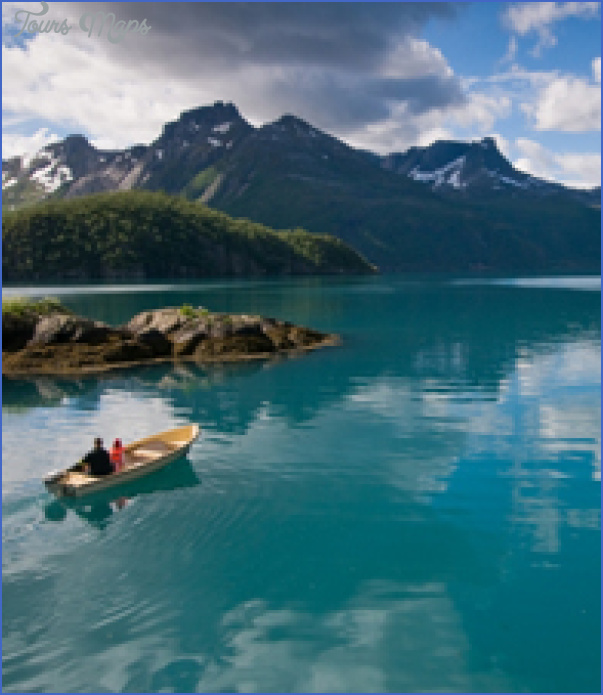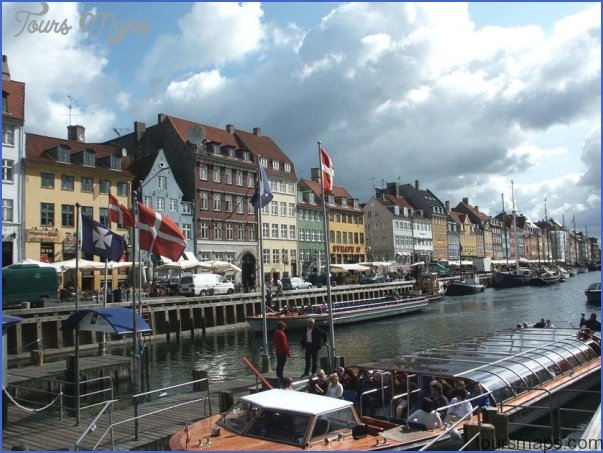The road N W from Store Heddinge passes through a number of pretty Zealand villages and in 22 km (14 miles) reaches K0ge (86), from which it is 30 km (19 miles) to Copenhagen, either by the old road (Gammel Koge Landvej) or the highway.
The beaches of northern Zealand. There are two alternative roads N from Copenhagen. The highway, which runs almost to Helsingor, is faster; but the more attractive route is on the Strandvej, which traverses Copenhagen’s fashionable suburbs and then through stretches of woodland and small coastal villages before joining up with the highway.
35 km (22 miles) from Copenhagen is the Louisiana Museum at Humlebsek (130). Beyond Helsingor, along the N coast of Zealand, are the island’s finest beaches sandy beaches fringed by pinewoods and dunes, with water that is clear but decidedly cold. The long run of beaches extends via Hornbeck and Giiieleje to Tisvildeleje and Liseleje, old fishing villages with many summer vacation houses. At Tisvilde is the Tisvilde Hegn, a large 18th c. plantation (1430 hectares 3600 acres) designed to prevent the sand from drifting. 3 km (2 miles) S of the little town is Tibirke church in the Tibirke Hills (extensive views).
The coast road continues from Liseleje to Hundested (Hundested Kro & Hotel, 62 b.), from which there is a ferry to GrenS in Jutland. In Hundested is a house which belonged to Knud Rasmussen, the explorer of Greenland, where can be seen Eskimo costumes and other items from that island. From here, the return route to Copenhagen is by Road 5, which goes through Frederiksvasrk (Frederiksvaerk Hotel, 62 interesting local museum), skirts a large lake, the Arreso, and comes to the ruined Ebeltoft Abbey (12th c.), with a museum containing a large number of skeletons and medical instruments dating from the time when the abbey was used as a hospital. The road continues by way of Hillerod, with the magnificent Frederiksborg Castle (130), and past large tracts of forest to Copenhagen. Copenhagen to Kalundborg (Roads 1 and 4). Road 1 runs W from Copenhagen to Roskilde (227), from which Road 4 continues to Holbaek (pop. 20,000; Strandparken Hotel, 52 b.), lying to the N of the through road on the Holbaek Fjord. Holbaek, which originally developed around a castle built by Valdemar Sejr in the early 13th c. is now a rapidly growing commercial and industrial town. Features of interest are the Museum, a 17th c. half-timbered house and the remains of a Dominican abbey, now occupied by a church community headquarters 4 km (2 miles) S of Holbaek is the church of Tveje-Merhbse, one of the most interesting of Denmark’s village churches, with twin towers unique to the architecture of the northern countries. The church contains remains of Romanesque wall paintings. From Holbaek, an attractive detour can be made to the N, skirting the Holbaek Fjord and the Lammefjord both branches of the large Isefjord which rank among Denmark’s finest sailing waters. From the Bavnehej (62 m 203 ft), the highest point in this area, there is a fine panoramic view extending as faras Roskilde. The Odsherred peninsula, a popular bathing area with wide dune-fringed sandy beaches, is reached on a road which runs N from Tuse, 6 km (4 miles) beyond Holbaak. Tuse church has wall paintings which include some unusual themes (e.g.
Travel guide Scandinavia lonely planet Photo Gallery
Maybe You Like Them Too
- The Best Cities To Visit in The World
- World’s 10 Best Places To Visit
- Coolest Countries in the World to Visit
- Travel to Santorini, Greece
- Map of Barbados – Holiday in Barbados


